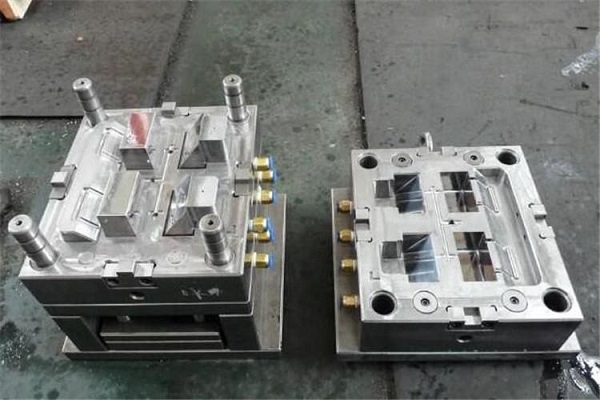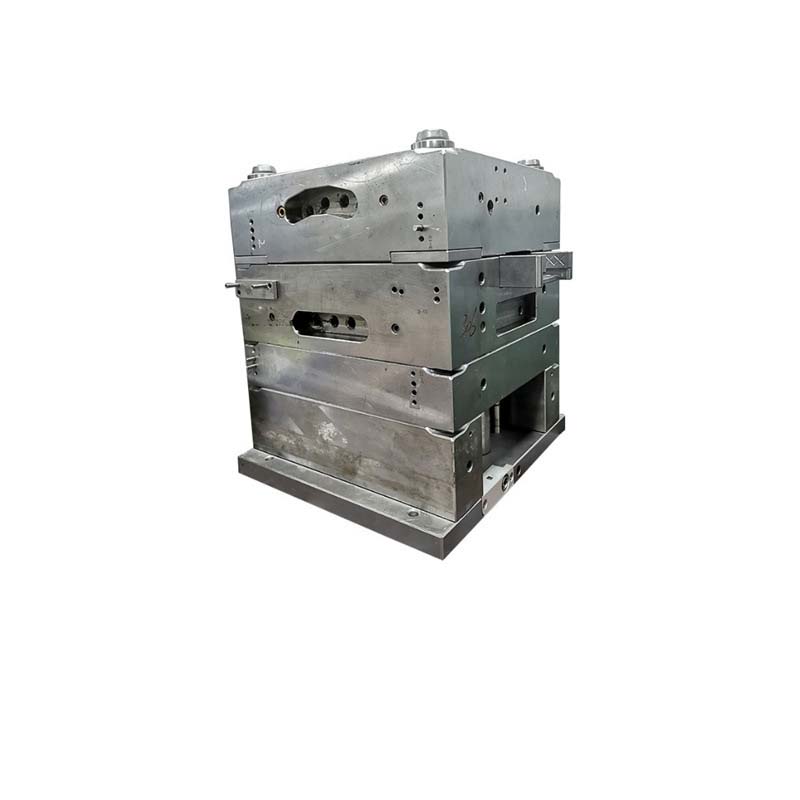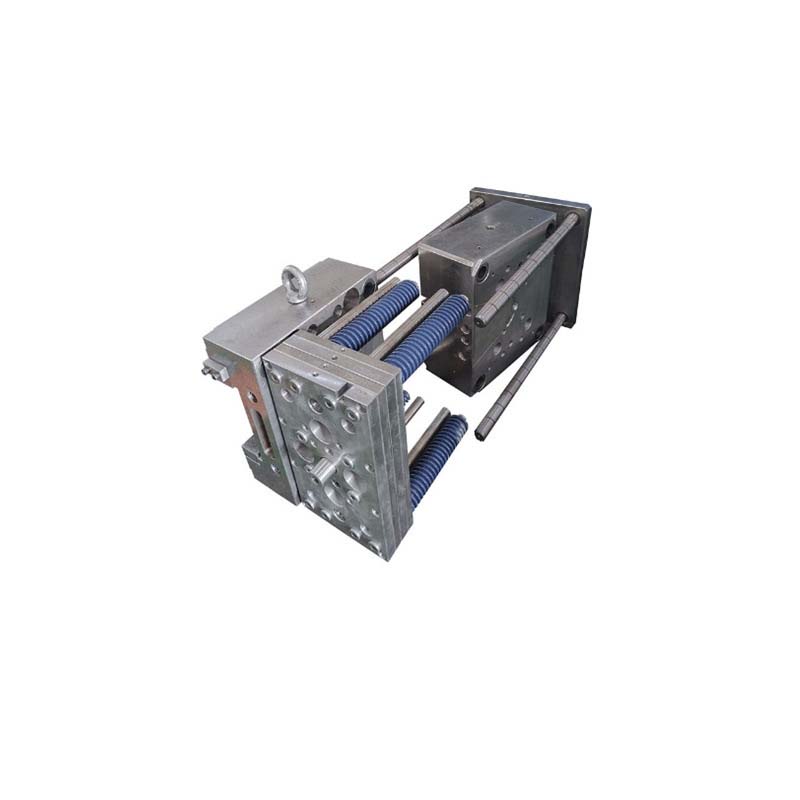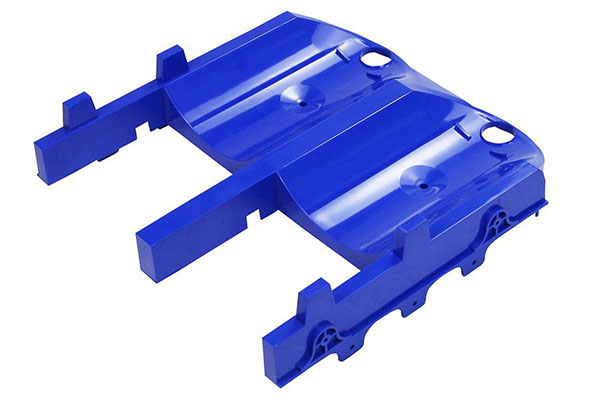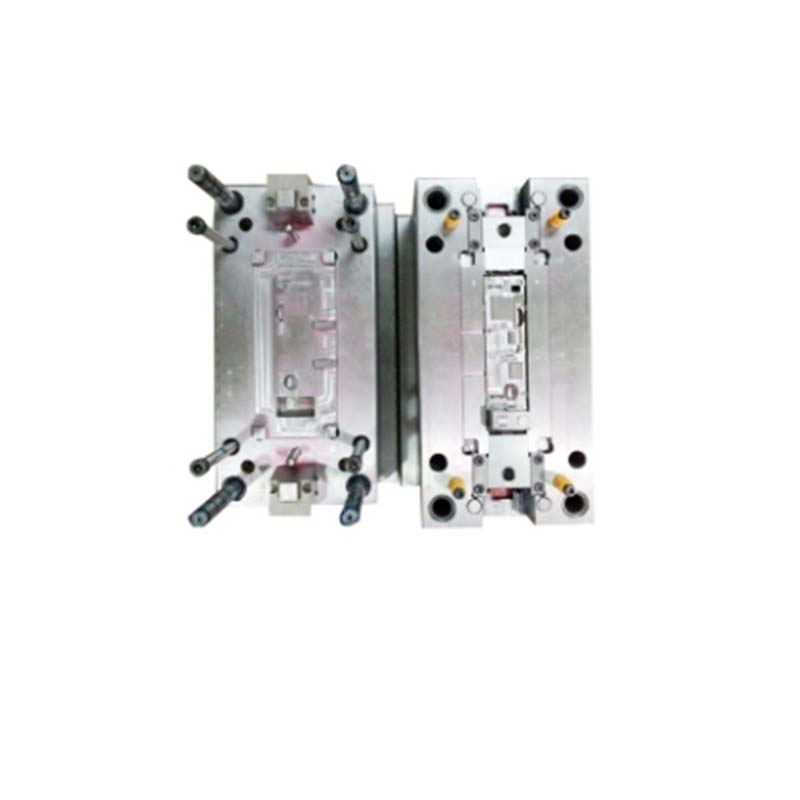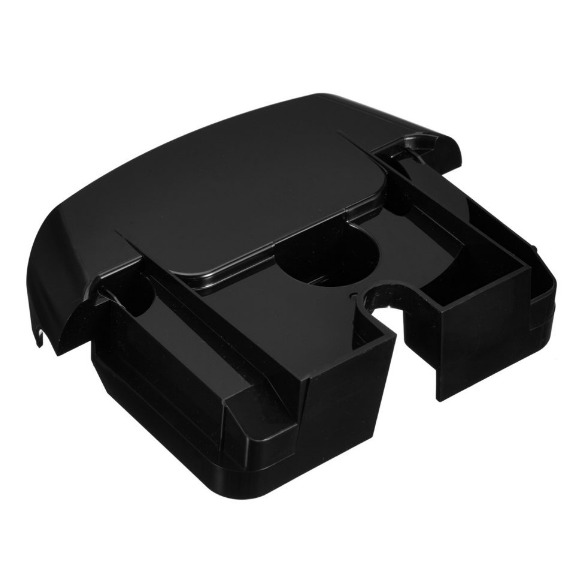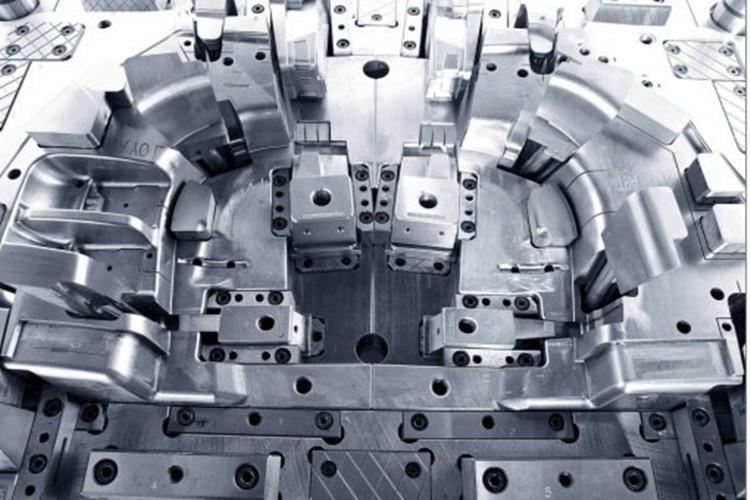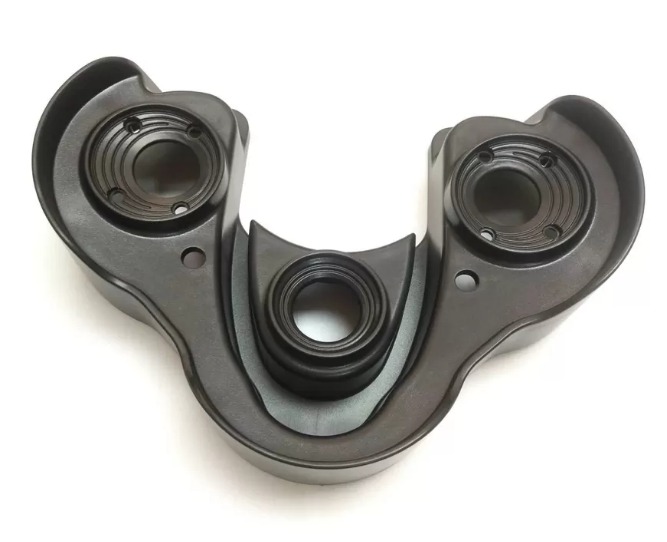Introduction
Plastic products are all around us in modern life. From the food packaging that keeps our groceries fresh to the intricate components in our electronic devices, plastics have become an integral part of daily existence. In the automotive industry, they are used to create lightweight parts that enhance fuel efficiency. In the medical field, plastic components are found in a variety of devices, from syringes to prosthetics, due to their biocompatibility and ease of sterilization. The construction industry also benefits from plastics in the form of pipes, insulation materials, and window frames, which offer durability and cost - effectiveness.
Behind the scenes of every plastic product lies the crucial process of plastic mold processing. While the molds themselves are the backbone of creating the desired shapes, the auxiliary materials used in this process are equally important. These materials play diverse roles, from facilitating the smooth release of the plastic part from the mold to enhancing the physical properties of the final product. Without the proper use of auxiliary materials, the quality, functionality, and appearance of plastic products could be severely compromised. Therefore, understanding what auxiliary materials are used in plastic mold processing is essential for anyone involved in the plastic manufacturing industry, whether it's a novice engineer just starting out or a seasoned professional looking to optimize production processes.
Classification of Auxiliary Materials in Plastic Mold Processing
1. Release Agents
Function: Release agents play a crucial role in plastic mold processing. Their primary function is to prevent the plastic part from adhering to the mold surface during the molding process. This ensures an easy and clean release of the product, reducing the risk of damage to both the part and the mold. For example, in injection molding of large plastic containers, a release agent can make the demolding process smooth, saving production time and cost.
Common Types and Their Advantages/Disadvantages:
- Silicone - based Release Agents:
- Advantages: High heat resistance, which makes them suitable for high - temperature molding processes such as injection molding of engineering plastics. They also provide excellent release performance, often requiring less application frequency. For instance, in the production of automotive plastic components made from high - temperature - resistant materials like polycarbonate, silicone - based release agents can maintain their effectiveness even under extreme processing conditions.
- Disadvantages: They can sometimes cause problems with subsequent finishing operations such as painting or gluing. The silicone residue on the plastic surface may prevent good adhesion of coatings or adhesives.
- Fluoropolymer - based Release Agents:
- Advantages: Offer very low surface energy, resulting in outstanding release properties. They are also highly chemical - resistant, making them suitable for use with a wide range of plastics and in harsh processing environments. In the manufacturing of medical plastic devices where chemical resistance is crucial, fluoropolymer - based release agents are often preferred.
- Disadvantages: Tend to be more expensive than other types of release agents, which can increase production costs.
Key Points for Selection: When choosing a release agent, factors such as the type of plastic being processed, the molding temperature, and any post - processing operations need to be considered. For plastics that require painting or bonding after molding, a non - silicone release agent should be selected to ensure good adhesion.
2. Lubricants
Function in Plastic Mold Processing: Lubricants are used to reduce friction between the plastic and the mold surfaces, as well as within the plastic material itself during processing. This helps in smooth flow of the plastic melt, improves the filling of the mold cavity, and can enhance the surface finish of the final product.
Differences between Internal and External Lubricants:
- Internal Lubricants: These are added directly to the plastic resin during compounding. They act within the plastic matrix to reduce the internal friction between polymer chains. This results in improved melt flow properties, making it easier for the plastic to be processed. For example, in the extrusion of plastic pipes, internal lubricants can ensure a consistent and smooth flow of the plastic through the die, resulting in pipes with uniform wall thickness.
- External Lubricants: Applied to the mold surface, external lubricants form a thin film that reduces friction between the plastic and the mold. They are especially useful in preventing sticking and can help in the demolding process. In injection molding of complex - shaped plastic parts, external lubricants can assist in the easy release of the part from the mold.
Common Lubricants and Their Application Scenarios:
- Paraffin Wax: A common external lubricant. It is relatively inexpensive and easy to apply. It is often used in the injection molding of general - purpose plastics like polyethylene and polypropylene for simple - shaped products such as plastic toys.
- Stearic Acid: Can be used as both an internal and external lubricant. It is effective in improving the melt flow of many plastics and also provides some release properties. It is widely used in the production of plastic sheets and films.
3. Plasticizers
Effect on Plastic Properties: Plasticizers are additives that increase the flexibility, softness, and workability of plastics. They do this by reducing the intermolecular forces between polymer chains. For example, in the production of PVC (polyvinyl chloride) products such as flexible tubing or vinyl flooring, plasticizers are essential to transform the rigid PVC resin into a flexible and usable material.
Common Plasticizers and Their Characteristics/Applicable Scopes:
- Phthalates: One of the most widely used types of plasticizers. They offer excellent plasticizing efficiency, good compatibility with many plastics, and are relatively inexpensive. They are commonly used in PVC products for applications like automotive interiors, wire and cable insulation, and plastic toys. However, concerns have been raised about their potential environmental and health impacts, especially in products that may come into contact with food or children.
- Citrate - based Plasticizers: These are considered more environmentally friendly alternatives. They have good plasticizing properties and are often used in applications where low toxicity and environmental compatibility are important, such as in food - packaging plastics and medical devices.
Precautions for Using Plasticizers: When using plasticizers, it is important to control the dosage accurately. Over - plasticization can lead to a decrease in the mechanical strength of the plastic product, while under - plasticization may result in insufficient flexibility. Also, in applications where the plastic product may be exposed to heat, light, or chemicals, the stability of the plasticizer needs to be considered to ensure long - term performance.
4. Stabilizers
Important Role: Stabilizers are crucial in plastic mold processing as they protect the plastic from degradation during processing and in its end - use environment. Plastics can be degraded by various factors such as heat, light, and oxygen, which can lead to a loss of mechanical properties, discoloration, and reduced lifespan of the product.
Common Stabilizer Types and Their Action Principles:
- Heat Stabilizers: These are mainly used to prevent thermal degradation of plastics during high - temperature processing. For example, in PVC processing, metal salts such as lead salts, organotin compounds, and calcium - zinc stabilizers are used. They work by capturing and neutralizing the harmful by - products of thermal decomposition, such as hydrochloric acid in the case of PVC.
- UV Stabilizers: Protect plastics from the damaging effects of ultraviolet light. They absorb or reflect UV radiation, preventing it from reaching the polymer chains and causing chain scission or cross - linking. Benzophenones and benzotriazoles are common types of UV stabilizers used in outdoor plastic products like window frames, garden furniture, and automotive exterior parts.
How to Select Appropriate Stabilizers According to Different Plastics: Different plastics have different susceptibilities to degradation. For example, PVC is highly sensitive to heat degradation, so a suitable heat stabilizer must be selected based on factors like the processing temperature and the desired end - use performance. Polypropylene, on the other hand, is more prone to oxidation and UV degradation, so a combination of antioxidants and UV stabilizers is often required for applications where it will be exposed to sunlight and oxygen.
5. Colorants
Classification and Their Characteristics:
- Dyes: Dyes are soluble colorants that can provide bright and vivid colors. They are often used in applications where high - transparency and intense color are required, such as in the production of clear plastic bottles or transparent plastic sheets for decorative purposes. However, dyes may have limited light - fastness, which means they can fade when exposed to light for long periods.
- Pigments: Pigments are insoluble particles that are dispersed in the plastic matrix. They offer better light - fastness and heat - stability compared to dyes. Inorganic pigments like titanium dioxide (for white color) and iron oxides (for various earth - tone colors) are commonly used in applications where color stability is crucial, such as in automotive plastics, building materials, and outdoor products. Organic pigments can also provide a wide range of bright colors with good colorfastness and are used in products like plastic toys and consumer electronics.
How to Accurately Control the Addition Amount of Colorants: The addition amount of colorants needs to be precisely controlled to achieve the desired color. This is usually done through careful weighing and mixing during the compounding process. Color matching systems, often using spectrophotometers, are employed to ensure consistent color quality. Small variations in the amount of colorant can lead to significant differences in the final color of the plastic product.
Emphasis on the Requirements of Different Plastics for Color Stability: Different plastics have different chemical structures, which can affect the stability of the colorants. For example, some plastics may have a tendency to react with certain colorants, leading to color change or degradation. In engineering plastics like polyamide, which is used in high - performance applications, colorants need to be carefully selected to ensure they can withstand the high processing temperatures and the chemical environment of the end - use application without losing color stability.
The Significance of Auxiliary Materials in Plastic Mold Processing
1. Impact on Product Quality
Surface Finish: The right release agents and lubricants can significantly improve the surface finish of plastic products. For example, in the production of high - end consumer electronics housings, a high - quality release agent ensures that the plastic part comes out of the mold with a smooth and defect - free surface, eliminating the need for additional polishing or finishing steps. This not only enhances the aesthetic appeal of the product but also improves its tactile feel for the user.
Mechanical Properties: Plasticizers and stabilizers play a crucial role in maintaining and enhancing the mechanical properties of plastics. By adding the appropriate plasticizer, the flexibility and toughness of the plastic can be adjusted according to the requirements of the final product. Stabilizers, on the other hand, prevent degradation of these mechanical properties over time due to environmental factors. In the case of outdoor plastic furniture, UV stabilizers protect the plastic from the sun's rays, ensuring that it retains its strength and color for years.
2. Influence on Production Efficiency
Mold Filling and Demolding: Lubricants and release agents are key to efficient mold filling and demolding processes. A well - lubricated mold allows the plastic melt to flow quickly and evenly into the mold cavity, reducing the cycle time of the molding process. For instance, in high - volume injection molding of small plastic parts, the use of a suitable external lubricant can enable rapid demolding, increasing the number of parts produced per hour.
Preventing Mold Fouling: Release agents also help prevent the build - up of plastic residue on the mold surface. This reduces the need for frequent mold cleaning, which can be time - consuming and costly. In continuous production lines, minimizing mold cleaning intervals can keep the production running smoothly and increase overall productivity.
3. Cost - Control Aspect
Material Savings: The proper use of auxiliary materials can lead to material savings. For example, accurate colorant dosing ensures that no excess colorant is used, reducing raw material costs. Additionally, effective release agents prevent part damage during demolding, minimizing waste and rework, which in turn saves both material and production costs.
Mold Lifespan Extension: Stabilizers and lubricants can contribute to extending the lifespan of the mold. By protecting the mold from corrosion and wear caused by the plastic material and processing conditions, they reduce the frequency of mold replacement. A mold that lasts longer means lower capital expenditure over time for the plastic mold processing business.
Case Example: The Consequences of Incorrect Auxiliary Material Selection
A plastic molding company was producing plastic toys. They decided to cut costs by using a cheap and untested release agent. During the production process, the release agent did not perform well, causing many of the plastic toy parts to stick to the mold. This led to a high rate of damaged products, with about 20% of the production batch being scrapped. The company had to spend extra time and resources on cleaning the mold and re - producing the defective parts. In addition, the poor - quality release agent also caused premature wear of the mold, resulting in the need for an early mold replacement. The overall cost increase due to these issues far exceeded the savings made from using the cheap release agent, highlighting the importance of choosing the right auxiliary materials in plastic mold processing.
Yigu Technology's Insights
As a non - standard plastic metal products custom Supplier, Yigu Technology emphasizes the importance of choosing the right auxiliary materials according to different plastic molds and product requirements. We understand that the quality of auxiliary materials directly affects the quality of the final product. For example, when dealing with high - precision plastic molds for medical device components, we select release agents and lubricants with extremely low impurity levels to ensure product purity.
We also pay close attention to the environmental protection and quality of auxiliary materials. In an era where environmental concerns are growing, we prefer to use environmentally friendly plasticizers and stabilizers, such as citrate - based plasticizers, to meet both product performance and environmental requirements.
Moreover, Yigu Technology maintains close cooperation with reliable suppliers to ensure the stable supply and quality of auxiliary materials. This cooperation helps us to quickly adapt to market changes and provide high - quality plastic mold processing services to our customers.
